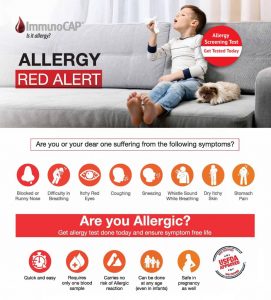Wheat Allergy: Causes and Diagnosis

Wheat, a staple component of numerous food dishes, is one of the most popular sources of nutrition for billions of people worldwide. Yet, wheat can pose a health challenge for certain people in the form of wheat allergy.
Wheat allergy is an allergic response in the body caused by consuming wheat-based products. According to FARE (Food Allergy Research & Education), although a mere 1% of the global population has a wheat allergy, those affected can experience various symptoms, ranging from mild hives rash to respiratory complications.
What is a wheat allergy?
Wheat allergy is an allergic reaction on the skin and other body parts caused by consuming the proteins in wheat or wheat-based products. When someone with a wheat allergy consumes a wheat-based product, the body can respond with any one of the following reactions:
-
Immunoglobulin E-mediated reaction:
In this reaction, the body responds by producing Immunoglobin E (IgE). When someone ingests a wheat-based product, their body identifies certain wheat proteins as potential harm. Immediately, the immune system produces antibodies called IgE. These antibodies travel to the source of allergens and release a chemical called histamine. With the release of histamine, the body starts showing symptoms of allergies, like sneezing and itchy eyes.
-
Non-immunoglobulin E-mediated reaction:
In this scenario, the body’s immune system reacts without releasing IgE antibodies. Compared to the IgE-mediated response that took a few minutes, the non-IgE reaction can take up to 48 hours to develop. The body can experience eosinophilic esophagitis (EoE), an oesophagus, or food pipe inflammation. Other than that, individuals can also experience eosinophilic gastritis (EG), a stomach lining inflammation.
What are the causes of wheat allergy?
While it is true that wheat consumption is the cause of wheat allergy, but it is not wheat as a whole but specific proteins present in wheat that cause this allergy. There are four types of wheat protein that one may be allergic to:
- Albumin
- Gliadin
- Globulin
- Gluten
What are the symptoms of wheat allergy?
The symptoms of a wheat allergy can manifest within minutes of consuming wheat or after a few hours or days in these forms.
- Respiratory symptoms: Asthma, respiratory distress, wheezing, inflammation of nasal passages
- Neurological symptoms: Dizziness, Headaches, confusion, blurred vision, and seizures
- Digestive symptoms: Bloating, abdominal pain, diarrhoea, nausea, and vomiting
- Dermatological symptoms: Eczema, hives rash, blisters, and swelling of the hands and face
- Oropharyngeal symptoms: Swollen tongue and throat, itchiness in throat and mouth, and coughing
Wheat allergies can demonstrate a wide range of reactions, from mild to severe. In some extreme cases, individuals may also experience anaphylaxis, a life-threatening response characterised by throat tightness, difficulty breathing, dizziness, and skin pallor.
How to diagnose wheat allergy?
If someone has a family history of allergies or experiences mild wheat allergy symptoms, visit an allergist immediately.
An allergist might recommend any one of the following allergy tests to diagnose a wheat allergy properly:
- Skin test: In this test, the skin on the arm or back of the patient is exposed to drops of purified allergens, including wheat proteins. The purpose is to see if the patient shows signs of allergic reactions on the skin, like a hive rash. In case the skin turns red or itchy, it can be concluded that they are allergic to wheat.
- Food challenge test: Conducted under stringent medical supervision, this allergic reaction test requires the patient to consume wheat in increasing amounts until a reaction is observed.
- IgE Blood test: If a skin allergic reaction test is not possible due to a dermatological condition or potential conflict with certain medications, an Immunoglobin E (IgE) blood test can be prescribed. Here, the doctor will take a blood sample to measure the presence of IgE antibodies. An increased amount would indicate the presence of an allergy.
Is wheat allergy and gluten allergy the same thing?
No, a wheat allergy is not the same as a gluten allergy. According to the American College of Allergy, Asthma & Immunology (ACAAI), there is no such thing as a gluten allergy. Instead, people misinterpret celiac disease as a gluten allergy. In celiac disease, the body experiences a range of symptoms upon consumption of the protein gluten. Symptoms include excessive diarrhoea, rashes, abdominal pain, and weight loss.
How to manage wheat allergy?
Wheat allergy is a medically significant condition that demands careful management and heightened awareness. Understanding the causes, symptoms, and diagnostic procedures is essential for properly managing this allergy.
If you suspect wheat allergy symptoms, you must seek the correct diagnosis immediately. Visit your allergist and take an allergy test as soon as possible.














